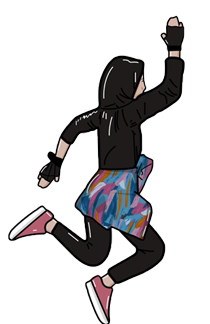SPOT REDUCTION
WHAT IS THAT MEAN??
The claim that fat in a certain area of the body can be targeted for reduction through exercise of specific muscles in that desired area. For example, exercising the abdominal muscles in an effort to lose weight in or around one’s midsection.

IS IT POSSIBLE TO REDUCE SPOTS??
The short answer is no. Targeted fat loss, often refered to as spot reduction, is not possible and there’s no solid scientific evidence to suggest that you can burn fat on specific areas of your body
- KNOW IT RIGHT
Although professionals know spot reduction is a myth, many people still believe that it is possible to choose where fat can be lost on one’s body because of the continual misleading information fitness settings and the internet are providing. The scientific consensus among fitness experts and researchers is that spot reduction is a myth. This belief has evolved from the idea that gaining muscle increases metabolism, resulting in fat reduction. People think that fat loss in a specific region could be targeted by building muscle around it.Studies have shown that it is not possible to reduce fat in one area by exercising that body part alone. Muscle growth in a region does not reduce fat in that region. Instead, fat is lost from the entire body as a result of diet and regular exercise.
I WANNA REDUCE ONLY MY BELL FAT ..
In another randomized study, scientists divided 24 sedentary adults, ages 18–40, into an exercise group and a control group. The exercise group added 7 abdominal exercises, 2 sets of 10 reps each, 5 days a week, for 6 weeks, into their daily routines. The scientists discovered that at the end of the 6 weeks, through comparing a variety of endurance tests, body composition tests, and anthropometrics, the subcutaneous fat around the abdominal region did not shrink. However, muscular endurance of the core region did improve when comparing the before and after of the number of sit-ups between the post-study exercise group and control group. Therefore, even though an increase in muscular development of a certain region in the body took place, it did not remove the fat around the muscles. Again, there was no proof of spot reduction taking place


No Comments